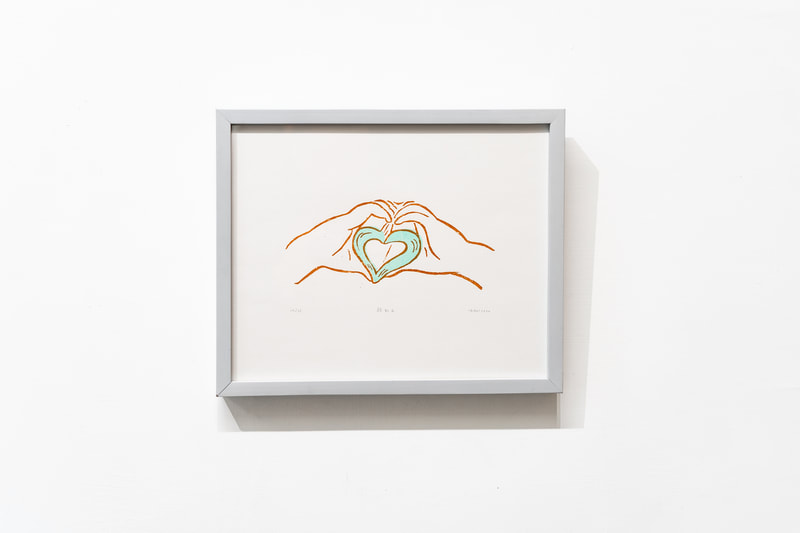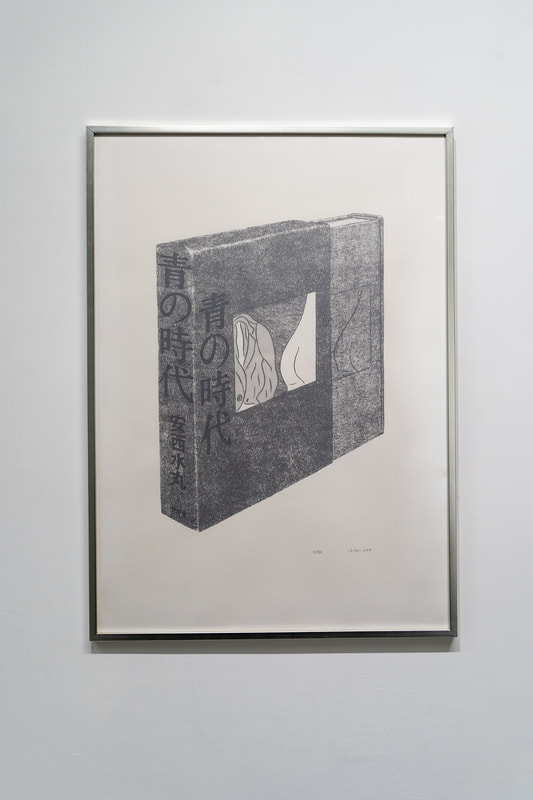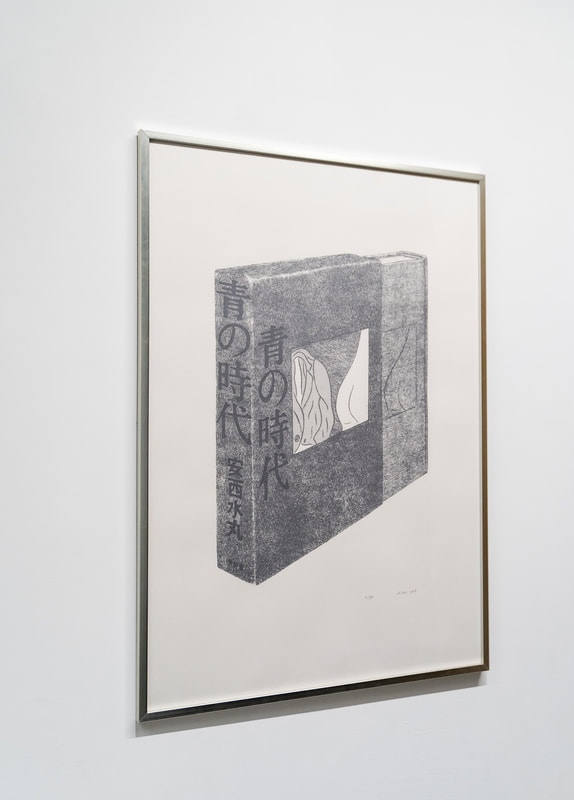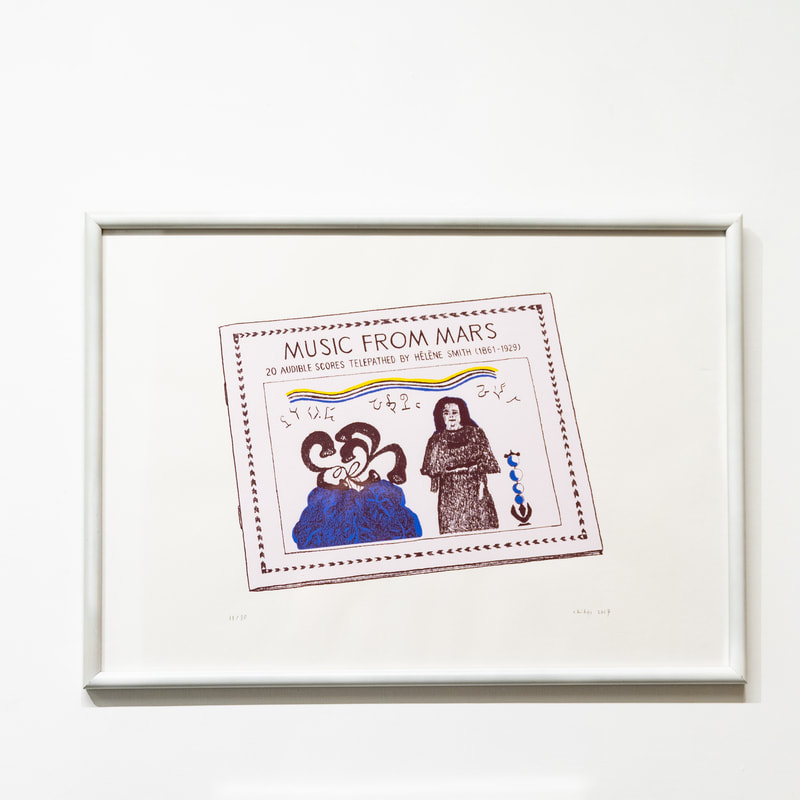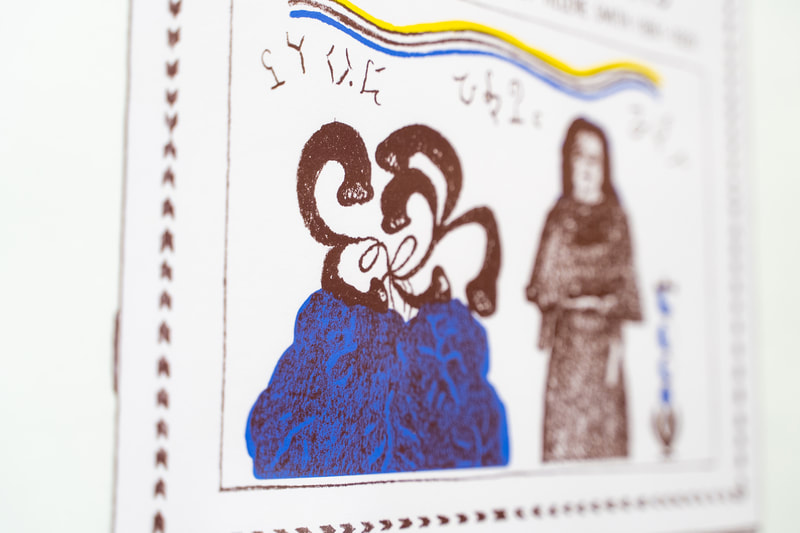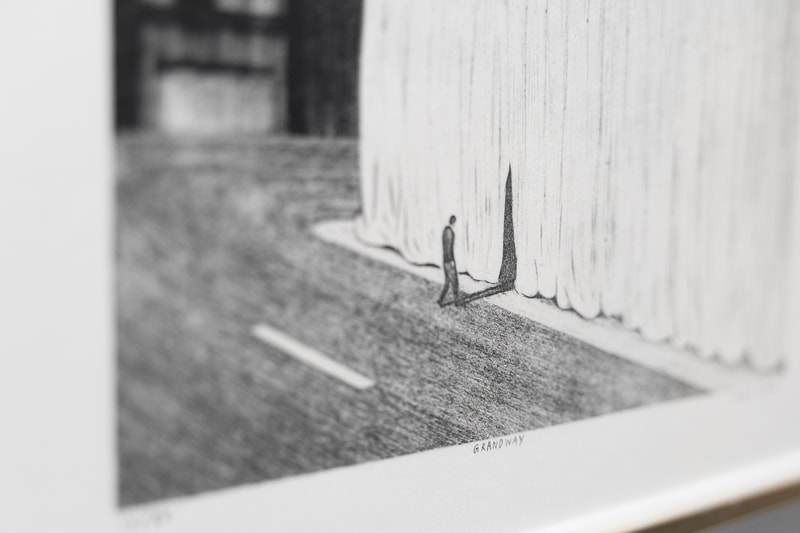智海 Chihoi
版畫 Prints
|
以貌取書
智海的絹印版畫充滿了他對書的熱愛——從他已絕版的「夢的書」書冊挑選了兩張繪畫製作成單張版畫,智海以他獨特風格畫出書衣的肖像,描述的兩本書是他珍藏已久、以及幻想的,不存在又想擁有的書。智海的幽默表達在他的木刻版畫作品《顏如玉》,將書與愛心的手勢做結合朔造成巧妙的形狀,像似難分難捨的情人。而在五色凸版印刷《富嘉》中藝術家描繪了一個孤獨的身影走進一棟完全披著布的未知建築物,畫面來自藝術家對香港城市景觀的興趣,高樓施工通常以竹蓬鷹架與綠色紗布包圍著整棟建築,就像劇院幕布等待大揭幕一樣,智海的圖像喚起了對可能潛伏在情境中的期望和焦慮。 智海的自學創作背景起源於他對香港實驗漫畫家,電影節和西方文學書的興趣。一股說故事的動力激發了他從大學時代起嘗試發表漫畫及插畫,見載香港報章雜誌及海外漫畫選集。藝術家用自身作品中經常會有的黑色幽默表達其創作過程「畫漫畫竟然那麼痛苦,倒不如用最痛苦的方法去畫線條」一開始選擇使用最細的麥克筆畫出獨特的密集線條風格。後來受到歐洲漫畫家的影響,開始嘗試用鉛筆創造更豐富的層次表現與留下擦除痕跡。 智海將他的漫畫創作經驗帶到多元媒材,形成了獨特的繪畫風格,將時間與想表達的情緒、意象、訊息,歸納到一個畫面。智海透過他在城市中觀察到的場景,描繪人類日常生活的平庸,反思社會狀態的變化和歷史的積累。 Book by its Cover Chihoi’s silkscreen prints reflect his love of books – featuring portraits from his now out of print series ‘Dream Books’. He chose two meticulously sketched drawings of books, producing them as prints – one is a real book from his collection, the other an imagined book that does not exist, but wants to possess. Chihoi’s wood block print Jade Love reveals his humor – combining a book with a heart-shaped hand gesture, like inseparable lovers intwined in an embrace. While his 5-color letterpress print Grandway depicts a surreal scene – a solitary figure walking into an oppressive unknown structure completely draped in cloth, echoes his interest in the urban high rises of downtown Hong Kong, where construction work is often indicated by a green mesh and bamboo scaffolding wrapped around the entire building. Like dramatic theatre curtains awaiting a big reveal, Chihoi’s imagery evokes an expectation as well as an anxiety of what might be lurking underneath. A master of atmospheric storytelling, Chihoi’s art practice began with an interest in comics and illustration. His childhood interest in drawing later extended to experimental comics and graphic novels by Hong Kong artists, as well as film festivals and Western literature. His passion for story telling sparked his foray into publishing his first comics. Since 1996, he began to release comics, illustration and writing in the local press media and various international anthologies. He describes his distinctive densely filled line work with his typical dark humor, “since drawing comics is so arduous, you might as well use the most painful method to draw the lines”, at first using the thinnest marker pens to create texture. Later he began to primarily use pencil, a medium in which he could create more expressive gestures or leave traces of erasure. A self-taught artist, Chihoi brings his experience in working in comic books to different single – frame mediums, encapsulating the emotions, imagery or message that you want to express into one image. His imagery depicts scenes that he observes in the city, often focusing on the banality of daily life, while being wrapped in the wider social climate and past histories of society. |

